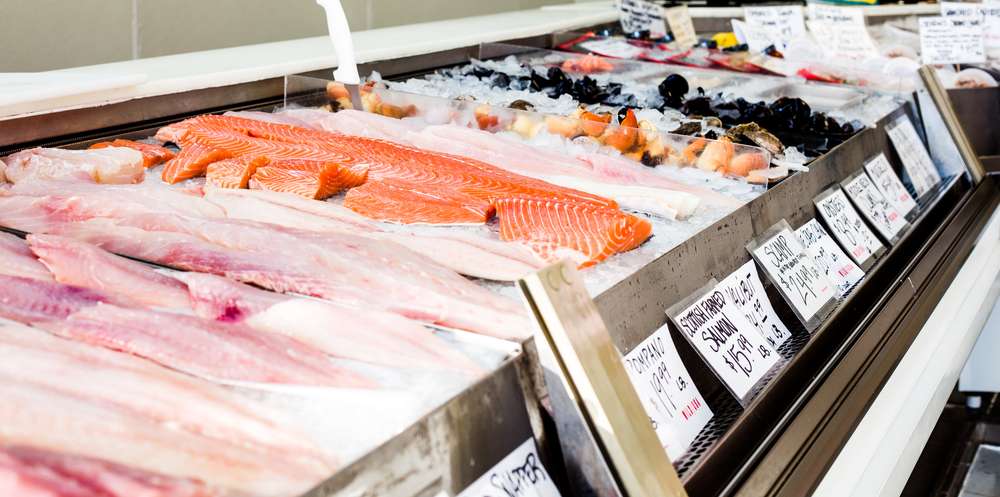The legacy of Covid and the ongoing Russian-Ukraine war have combined to create significant rises in the cost of living in most countries in the course of 2022. And the price of seafood, like that of most commodities, has surged. However, there are still options for sourcing sustainable seafood without breaking the bank.
Despite Covid leading to trade disruption and closure of restaurants, demand for seafood defied expectations and stayed strong for most of the last two years. Consumers showed an increased appetite for buying seafood to cook at home and a penchant for more expensive items, since they could not spend on eating out, so the market remained buoyant. However, in the last few months consumers – in Europe and elsewhere – have been feeling the pinch as many countries’ economies are starting to shrink, due to soaring energy prices caused by sanctions imposed on Russia. Meanwhile many consumers no longer have access to the time and money they may have experienced when furloughed.

Sanctions have caused significant increases in the cost of fuel and this has severely affected fishing fleets, aquaculture producers and transport operators, forcing all links in the seafood value chain to increase their charges or slash their returns. This is perhaps felt most strongly in aquaculture, where the prices of feed – which is typically the biggest cost for producers of popular staples such as shrimp and salmon – have increased by double digit percentages in many countries. Moreover some of the key aquafeed producers have boycotted buying their raw materials from Russia, putting further strain on their own businesses and forcing them to pay more for feed ingredients such as wheat.
This combination has led to an increase in the price of farmed seafood. Coupled with the reduced spending power of many consumers, a slump in demand has been predicted to continue through the second half of 2022 – with some farmers expected to struggle to break even as a result.
Salmon prices leap
The high costs of seafood have been a worry for the seafood companies as well as consumers and farmers. In May, Pittman Seafoods expressed the concern that the soaring cost of salmon would put consumers off eating one of Europe’s most popular fish, a trend that could be mirrored across the seafood market.
At that stage spot prices for farmed salmon were reaching record highs – fuelled by the return of the food service sector, the overheated US economy and a 6 percent drop in salmon supply – the biggest decline since 2016. However, thankfully for European consumers, these prices have since softened in the second half of the year, as harvest volumes bounced back to normal levels and demand in markets such as the US began to fall. In the longer term the prices are forecast to stabilise, although costs of seafood production are likely to remain above average for the foreseeable, suggesting that consumers will have to adapt to a long term price plateau for many seafood staples.
Capture fisheries disruptions
Meanwhile capture fisheries have been hit by the doubling of marine diesel prices in many countries and also disruptions in trade flows caused by the Russia-Ukraine war. On a direct level, fleets such as Romania’s, which traditionally fished in the Black Sea close to Ukraine, have had to keep away from some of their most productive grounds.
The increased cost of fishing coupled with the reduction in supply options have led to an increase in prices of whitefish fish such as cod and haddock. Moreover, the cost of sunflower oil – nearly 50 percent of which is produced in the Ukraine and is favoured for deep fat frying by fish and chip shops, which are among the most popular takeaways in the UK – has surged. Combined with the rising energy costs, the result is that most of these shops are increasing their prices and cutting their costs by reducing their hours. Profits are in decline, leading to numerous closures. It’s a story that is mirrored across Europe, where inflation levels are far outpacing increases in income and the latest report from Ireland’s Central Statistics Office (CSO) reveals that there’s been a 10.9 percent increase in the prices that retailers and other intermediaries have been paying for fish since July 2021. This has not all been passed on to the consumer, but the average prices for seafood have nonetheless increased by 5.4 percent in the 12 months up to July 2022, according to CSO.
At Pittman, we’re committed to give our customers a competitive price for an exceptional range of seafood products. Reliably delivered every time.










Comments